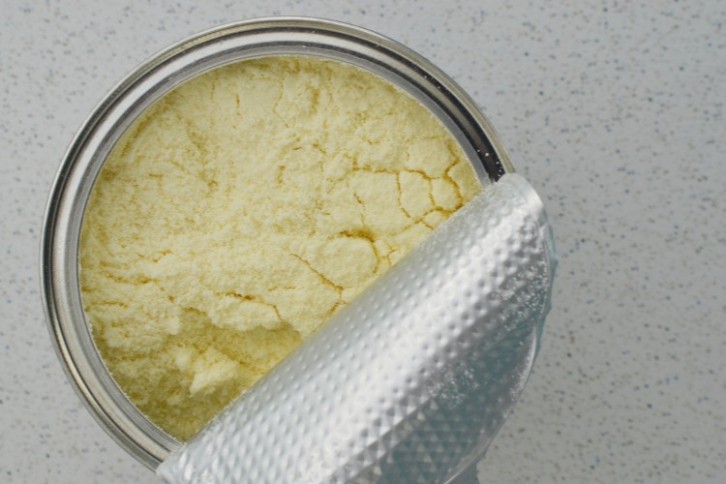Nestlé’s breakthrough technology produces creamy taste with less fat

Nestlé has developed a proprietary method where milk proteins mimic the size and texture of milk fat, allowing for lower-calorie formulations that retain full-fat-like functionality and taste. The company claims its method allows for up to 60% decrease in milk fat without affecting quality, taste and creaminess.
Key to the process is the controlled aggregation of milk proteins, as a Nestlé spokesperson explained: “The technology actually does not create fat out of proteins.
“Instead, it aggregates the milk proteins in such a way that they become of similar size to the droplets of fat present in milk. This would then be the trigger to create the experience of a full cream milk taste with then less fat.”
The technology is based on the binding of larger milk protein clusters, so called aggregates, during the normal manufacturing of milk powders without needing to sort by size, we were told. “The unique element of this technology is that this aggregation is done in a controlled way in order to obtain protein aggregates that are large enough to reproduce the size of fat droplets and provide creamy mouthfeel but small enough to not have a perception of sandiness,” said the company’s spokesperson.
“Protein aggregates become larger in size similarly to the size of fat droplets in full cream milk powder. As a result, after blind tasting we have demonstrated through several consumer tests that consumers perceive the product to be of the same creaminess and texture of a full cream milk powder but with much less fat.”
The reduction of fat content in milk powder reduces the overall calories and the amount of saturated fat consumed; this in turn addresses the existing segment of consumers that are looking for semi-skimmed milk but do not want to compromise on taste.
The level of fat reduction depends on many factors, including regulations. “For example, in some countries, it is well-established the range of fat that a finished product must comply with to be called semi-skimmed,” the Nestlé spokesperson told us.
The company’s new fat-reduction method has been used to reduce the level of milk fat in Ninho Adulto, a powdered milk product for adults that’s marketed in Brazil; it is advertised as a semi-skimmed milk with the flavor and creaminess of Ninho Integral and 43% less fat when compared to the whole milk powder-equivalent product.
Regulatory considerations
While reducing fat below a certain threshold without affecting mouthfeel sounds like a win for the consumer, fat content is an important component from a standards perspective globally. In that sense, Nestlé faces barriers when it comes to just how much of the fat content the company can remove via its new proprietary method while still abiding to regulatory requirements for say, semi-skimmed milk.
“Nestlé is currently investing on expanding the technology in other continents and other dairy products in our portfolio while considering local regulatory requirements,” the company’s spokesperson told us.
For example, in the EU, skimmed milk is defined as having 0.5% fat or less; semi-skimmed – of between 1.5% and 1.8% fat; and whole milk, of 3.5% fat or more. In terms of powder products, whole milk powder must have no less than 26% and less than 42% of fat content by weight, while semi-skimmed powder should have between 1.5%-26% fat, and skimmed milk powder – under 1.5% fat by weight of the product.
In the US, the FDA mandates that lowfat and skim milk must have 1% and 0.5% fat respectively, while whole milk content must be at least 3.25%. As for whole milk powder, products must contain no less than 26% but no more than 40% of fat by weight; and nonfat and skimmed powders - 1.5% or less.






